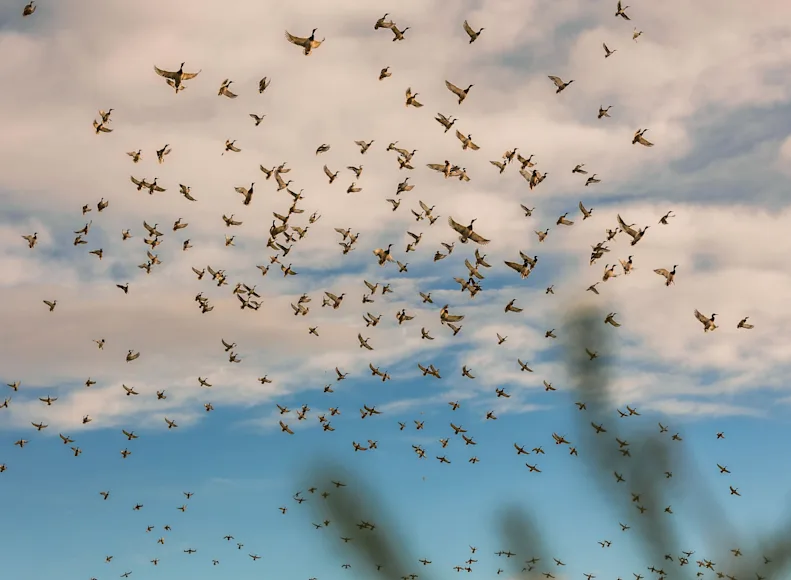There's a waterfowl season open somewhere across the four major flyways at almost any point in the year. And for the short time when there aren’t any ducks or geese to hunt in North America, other continents offer plenty of barrel-burning opportunities. But high-volume shooting isn’t the only thing that makes an unforgettable waterfowl hunt. There are various species, breathtaking locations, unique tactics, and different gear that all play a role in a bucket list duck or goose trip.
We kept those variables in mind when compiling this list of epic duck and goose hunts. Of course, there are plenty of other great trips that didn't make the lineup, but these are some of our favorite waterfowling adventures from decades of chasing ducks and geese. Better yet, many of these hunts are doable for the average duck nut. Others require a few years of saving up. Either way, here are 10 hunts every waterfowler should experience at least once in their lifetime.
1. Texas Early Teal
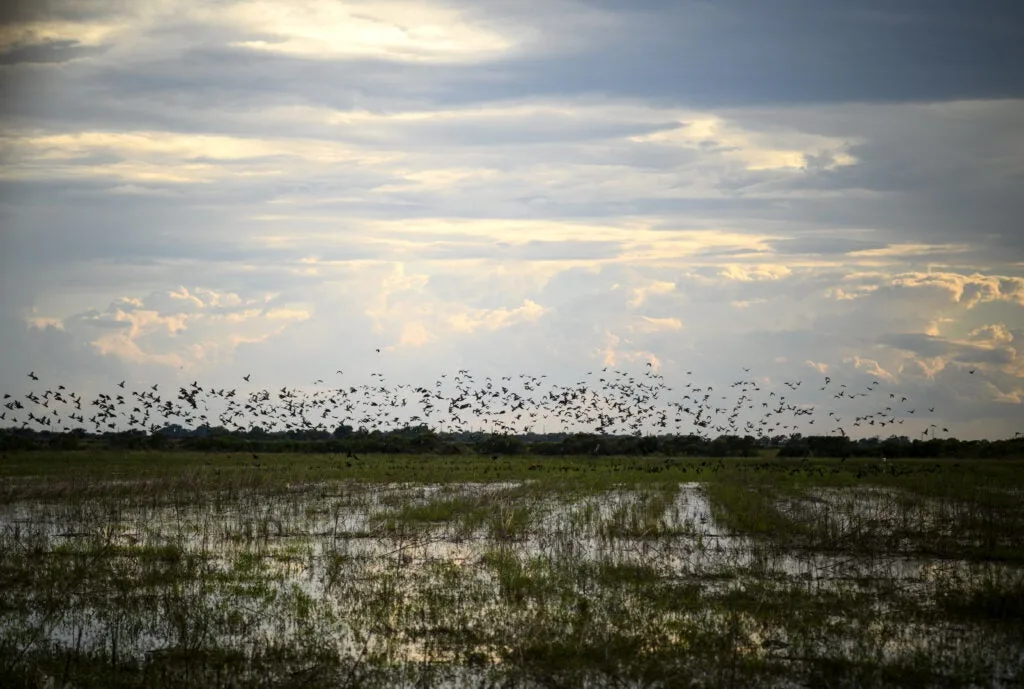
There is no better way to start duck season than with a good teal hunt, and there is no better place to hunt teal than Texas and Louisiana. Three days in a row, the teal came in waves, not that we could see—but hear. As each flock rose in the dark, the beating of hundreds of little wings sounded like surf crashing on a rocky shore. Then the sky filled with flitting, batlike shapes, and before shooting time, the teal had split into small bunches, pairs, and singles. We did our best to make the hunts last, but it was tough to stretch them much beyond 40 minutes before five of us had limits.
Catching the bluewing migration up north can be hit or miss, but along the Gulf Coast and in the prairies west of Houston where we hunted, teal stack up in boggling numbers. Teal hunts can be as simple as paying $250 to meet a guide with an ATV and decoys in the dark or as high-end as the Pintail Hunting Club, where I stayed. However much or little you spend, you will remember the swarms of teal long after the money is forgotten. —Phil Bourjaily
2. Western Canada Field Mallards
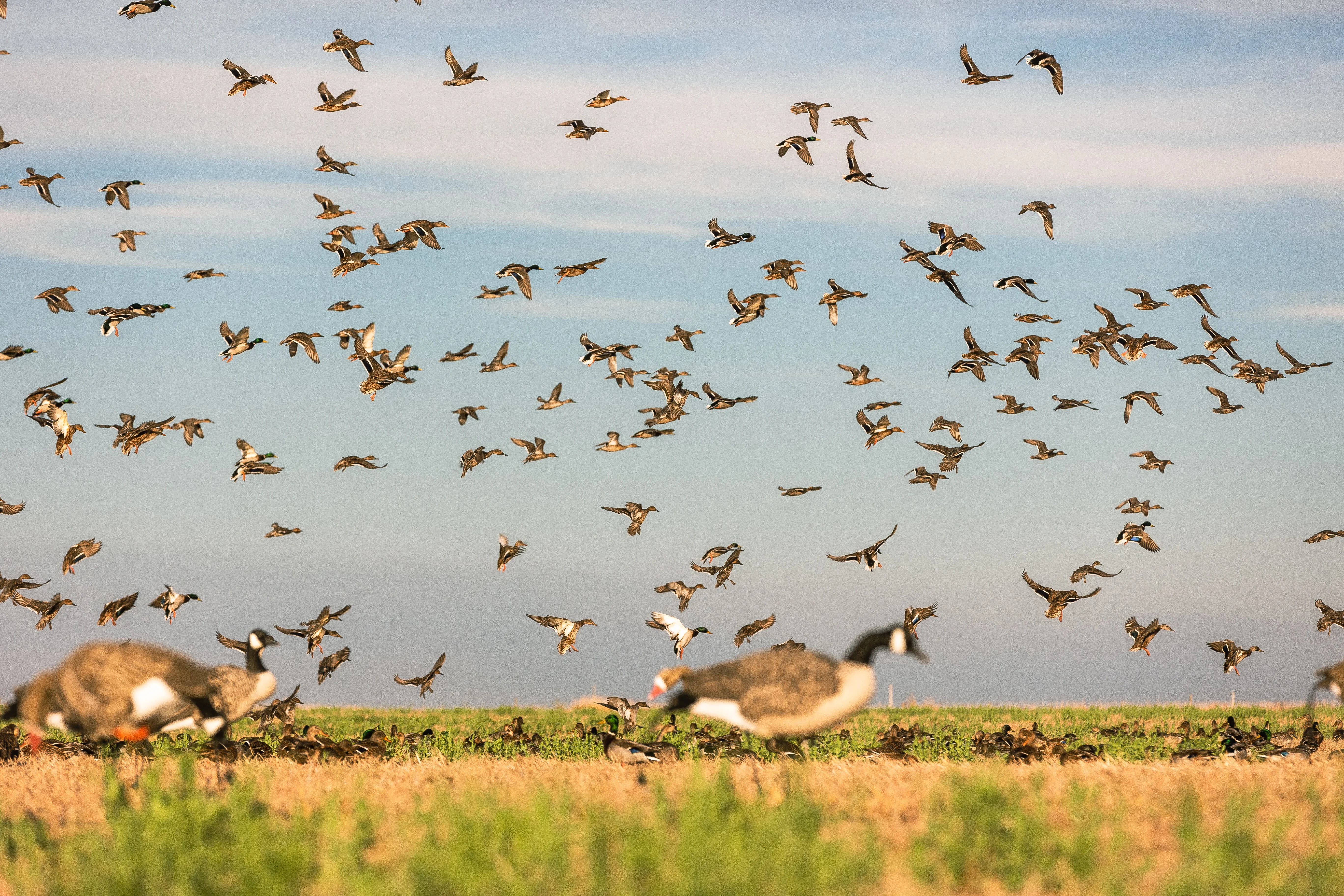
For a boy who grew up wading the beaver swamps of northeastern Ohio, hunting dry-field mallards was only a dream. That was until my wife and I finally took a trip to Saskatchewan one October. We stayed in the middle of nowhere and hunted geese—big naive Canadas—but the highlight was the ducks. Specifically, mallards over mixed duck/goose spreads from inside willow blinds. It was one of the best—and most affordable—DIY duck hunts of my life. All it takes is a passport, a couple tanks of gas, and boots on the ground scouting.
“Canada, and I’d pick Alberta over Saskatchewan for mallards, offers a lot of fresh ducks that are extremely willing to work a decoy spread,” said legendary call maker Bill Saunders. “I’ve had many incredible mallard shoots in Canada. For me, it’s the volume of birds. And the terrain? It’s absolutely beautiful.” —M.D. Johnson
3. Atlantic Ocean Layout Sea Duck Hunt
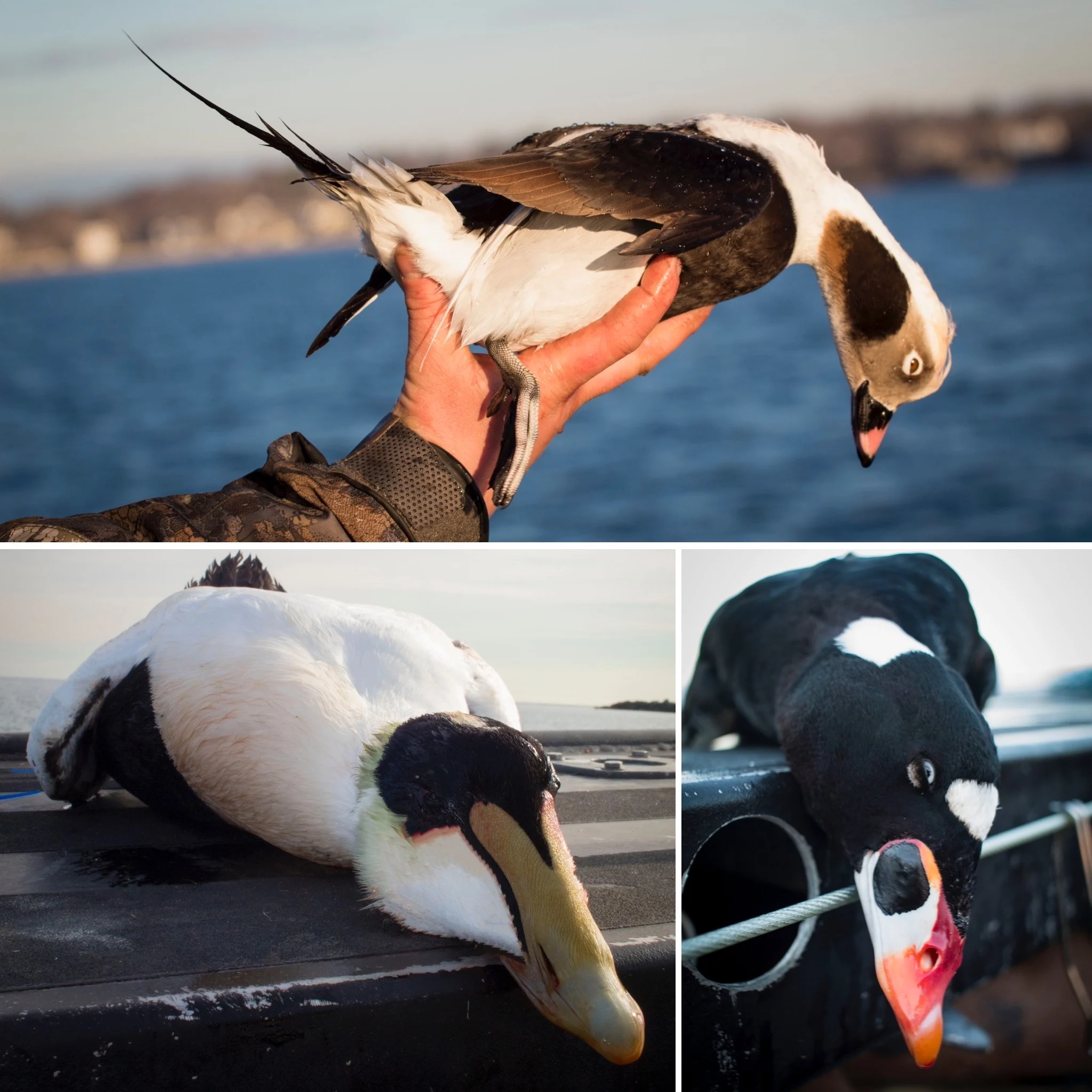
There's something different about hunting in the ocean. Besides being one of the most dangerous adventures I've ever been on—heavy seas, cold temperatures, and fierce winds—the amount of gear and precise execution it takes for a successful eider layout hunt is impressive. If done correctly, it can result in action-packed shooting with up to five of the seven sea duck species found in North America.
Once the long lines were set and the layout anchored, we sat in the rocking boat as waves crashed over the sides. Eiders, scoters, and long-tails flew directly down our decoy lines like they were on a track. It was the most challenging wingshooting I've ever experienced, with swaying waves momentarily taking the bird in and out of sight. Each time the layout rose from a wave, the inbound birds appeared closer and closer. We shot limits of snow-white eiders, all three species of scoters, and old squaw.
A hunt like this is not the time to plan a DIY trip with your puddle duck friends. Proper equipment and experience dealing with the harsh saltwater conditions are a must for a safe and successful hunt. I was fortunate to have veteran New England sea duck hunter Reilly McCue of RPM Outdoors show me the ropes. Excellent ocean hunting can be had throughout the Northeast, from the rocky shores of Maine to the open ocean of South Jersey. Just make sure to bring plenty of shells and Dramamine. —Ryan Chelius
4. Spring Snow Goose Hunt
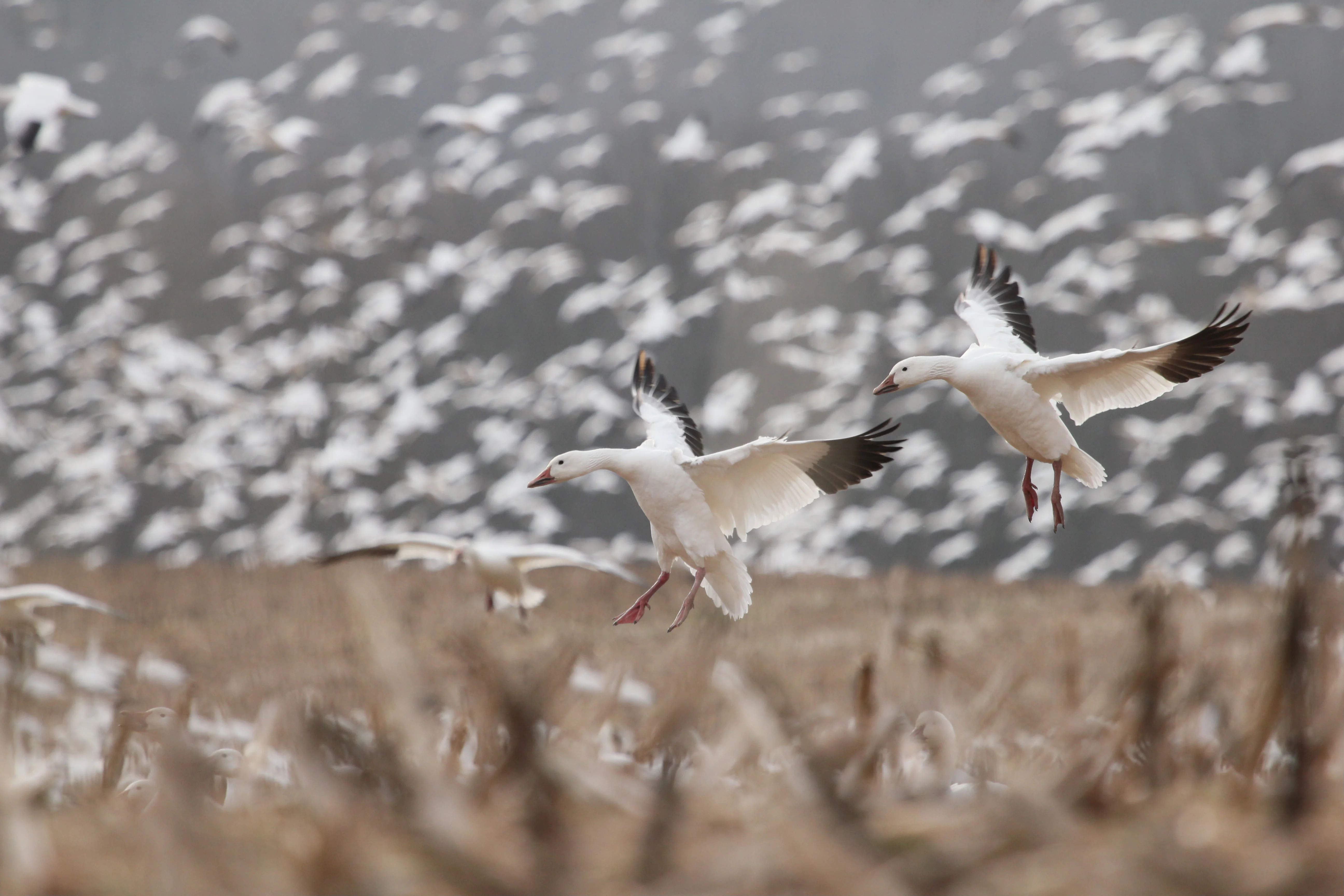
Established in 1999, wildlife managers implemented a special late-season conservation hunt in an effort to control the exploding lesser snow goose population. The season lasts anywhere from February to May, depending on where you are. These hunts usually include unplugged shotguns, electronic calls, and massive decoy spreads. It can also result in some of the most heavy shooting you'll ever experience in waterfowling, so make sure to bring earplugs.
I went on my first spring snow goose hunt with Tony Vandemore, co-owner of Habitat Flats in Missouri, during the early 2000s. Vandemore went around flipping switches and putting a series of multi-decoy rotary machines and battery-driven speakers into action. Soon, the flock of snow geese in the distance, which appeared no bigger than specks on the horizon, was above our spread making so much noise it was hard to think.
Now the spring conservation season has a huge following, much of which is focused on the area known as Missouri’s Golden Triangle—an expanse of hunting opportunity that includes Swan Lake National Wildlife Refuge, the Fountain Grove, Grand Pass conservation areas, and portions of the Missouri River. “It all depends on the year,” Vandemore says, “but we may have 750,000 snows here in The Triangle. Why come? It’s a way to extend your season. And everyone should see the majesty of this northward migration. It’s spectacular.” —M.D.J.
5. Great Salt Lake Greenwing Teal
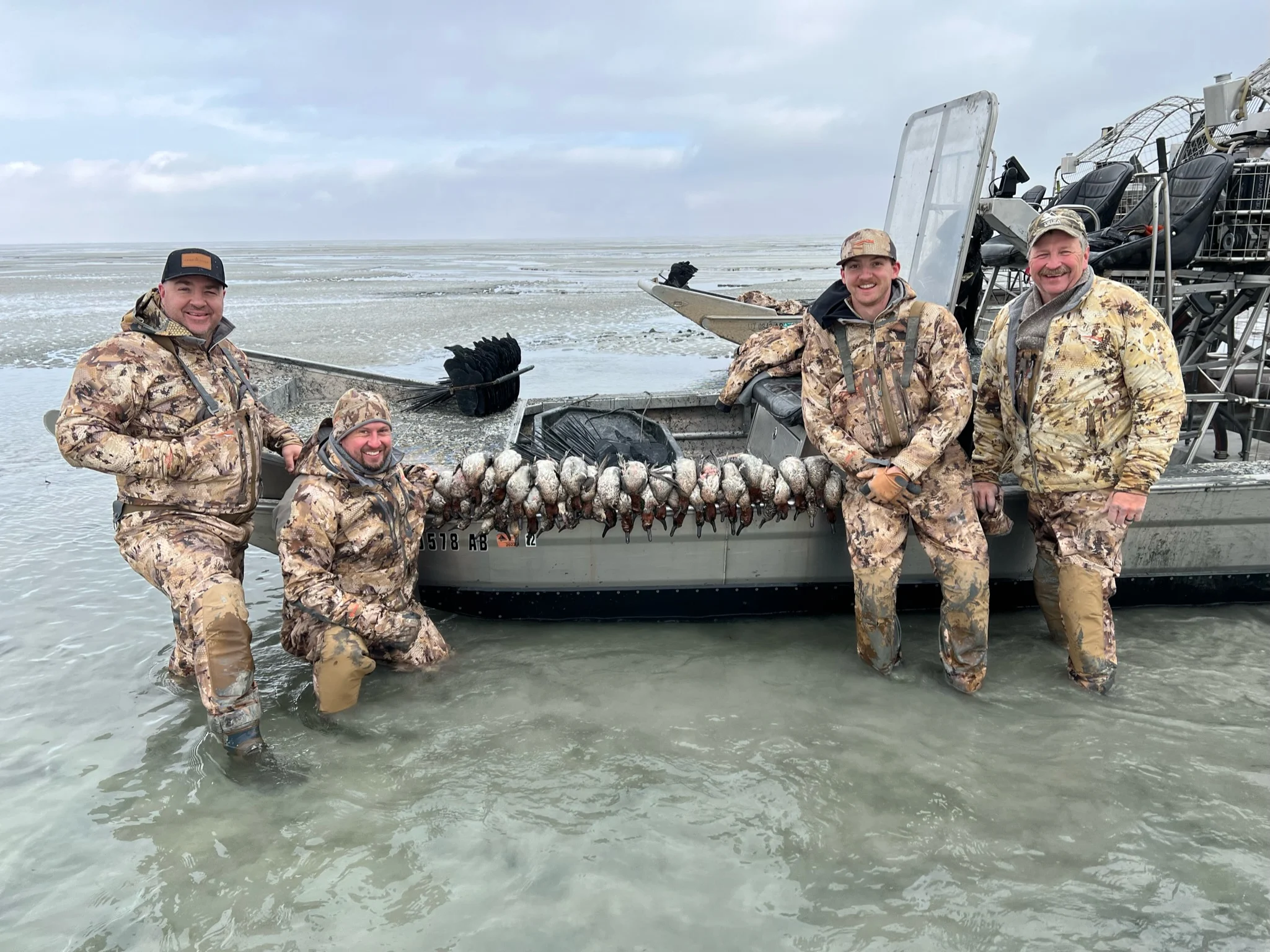
The chance to ride across the Great Salt Lake in an airboat is a good enough reason alone to make the trip to Utah. But pair that with the unique tactics of coffin box layout-style blinds and blacked-out silhouette decoys, and you have one of the best waterfowl hunts in America. Not to mention the thousands of plummed-out greenwings that divebomb the spread at high speeds.
There are other great hunting opportunities on and around the Great Salt Lake, including traditional small water puddle duck shoots and layout diver hunts. But you should go to hunt greenwings from plastic jet sleds in skinny water. I might be overselling the "skinny water" part of it. In reality, the barren Great Salt Lake is virtually waterless in many areas. This means the only way to access the birds is by airboat, but if you time it right, there's a good chance of seeing flocks of greenwings that number in the thousands. I was fortunate enough to experience just that, and we shot a seven-man limit in a half hour. —R.C.
6. South America Ducks
You can spend the summer daydreaming about the fall, or you can go duck hunting. South of the equator, summer is winter, and ducks fly north when days shorten. High limits may be the reason you go down there, but that isn’t the reason you want to go back.
Being in South America is the best part. Some go for the food and the wine, and I get that, but I like it because everything is so different. We have no species in common other than the cinnamon teal, so the ducks are all new. Some of the birds you see—like the 10-pound crested screamer that looks like a cross between an eagle and chicken or the ostrich-like rheas—have no equivalent at home.
On my first trip to Uruguay, in a marsh with no sign of human habitation anywhere near, a teenager on horseback appeared out of nowhere and rode his horse belly-deep into the water to help us pick up ducks at the end of the shoot. We left him with a bag of birds and packed ourselves into the van for the drive back to the lodge, very certain that we were in a place a long way from home. —P.B.
7. Arkansas Green Timber Mallards
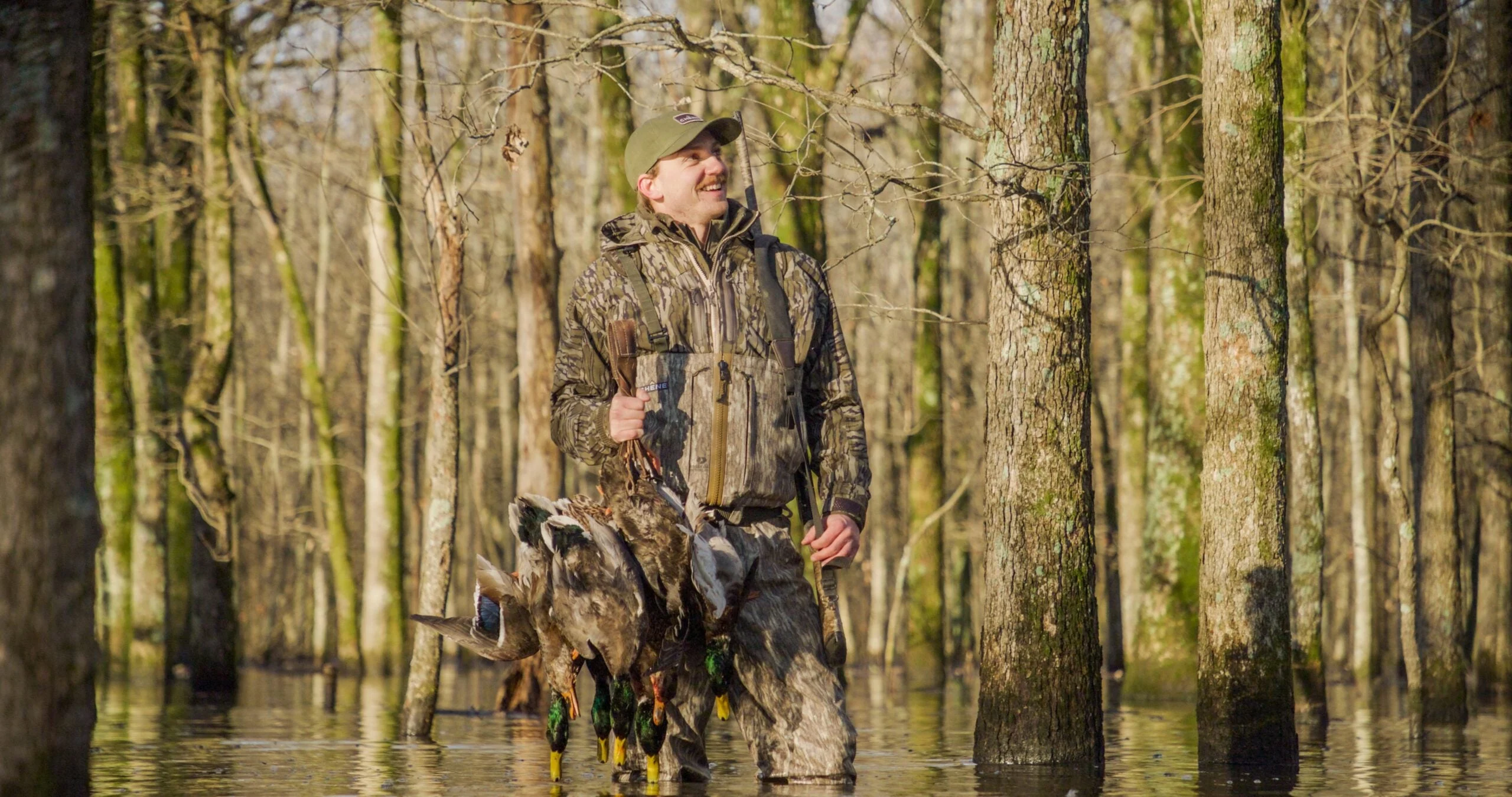
For many, flooded timber hunting is the holy grail of waterfowling. When it all comes together, flocks of mallards break through the canopy of big oak and cypress trees with wing beats so loud it can be disorienting to pick a bird to shoot. Eddie Nickens once referred to hunting in waist-deep timber as "a full-immersion baptism into one of the great rites of winter." And Mr. Eddie couldn't be any more spot on—hunting flooded timber is a rite of passage for the obsessed duck hunter.
Eastern Arkansas is the mecca for classic green timber hunts. This area of the Mississippi Flyway holds large numbers of wintering mallards that frequent the bottomland swamps and surrounding ag fields. There are excellent public land hunting opportunities around the Cache River and White River National Wildlife Refuges. When water levels rise, the surrounding bottomlands flood, attracting ducks into the protected timber. Pressure can be tough on public, but dedicated scouting can lead to successful timber hunts on wildlife management areas. There are also several commercial hunting outfitters that offer private guided hunts. —R.C.
8. Salt Marsh Black Ducks
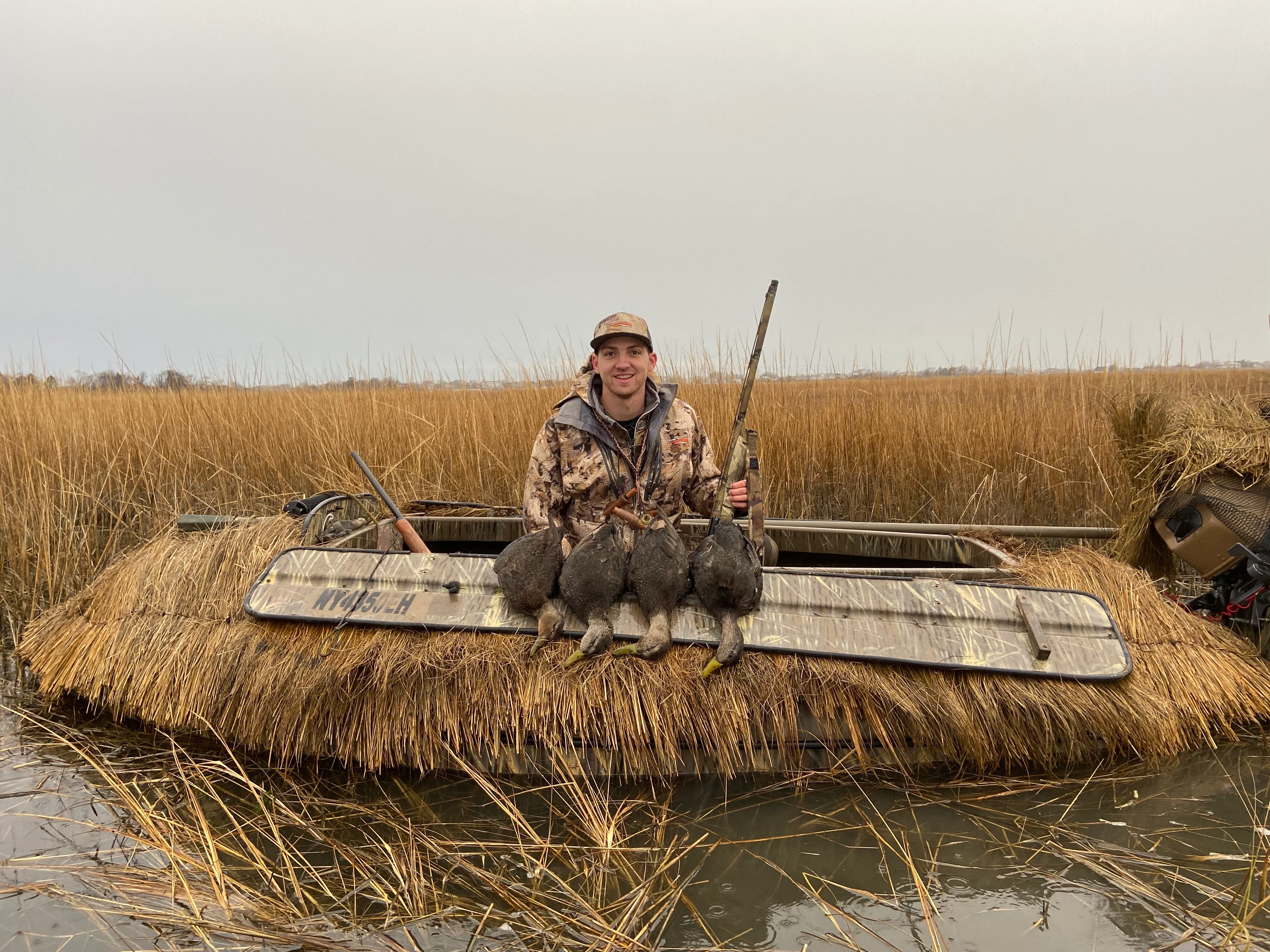
Consistently killing black ducks is no easy task, and the tidal marshes of Long Island and South Jersey are the best places to do it. Combined, these salt marshes winter well over 100,000 black ducks each year. However, successfully hunting these wary birds takes the proper equipment, an understanding of tides, and an excellent hide. Specialized grassboats and sneak boxes are what most hunters use to access and hunt these tidal waters.
Salt marsh newcomers should consider hiring a guide or tagging along with an experienced hunter. Those not paying close attention to a falling tide can easily get stuck and have to wait six hours for the next high tide. Black ducks are by and large the most abundant species of puddle duck in these marshes, but shooting mallards, gadwall, and pintail are also a possibility. However, don't expect a barrel burner of a hunt. Harvesting one or two black ducks is a very successful day on the bay. And if you have some time, you might even get the chance to set up for Atlantic Brant. —R.C.
9. Mississippi River Canvasbacks
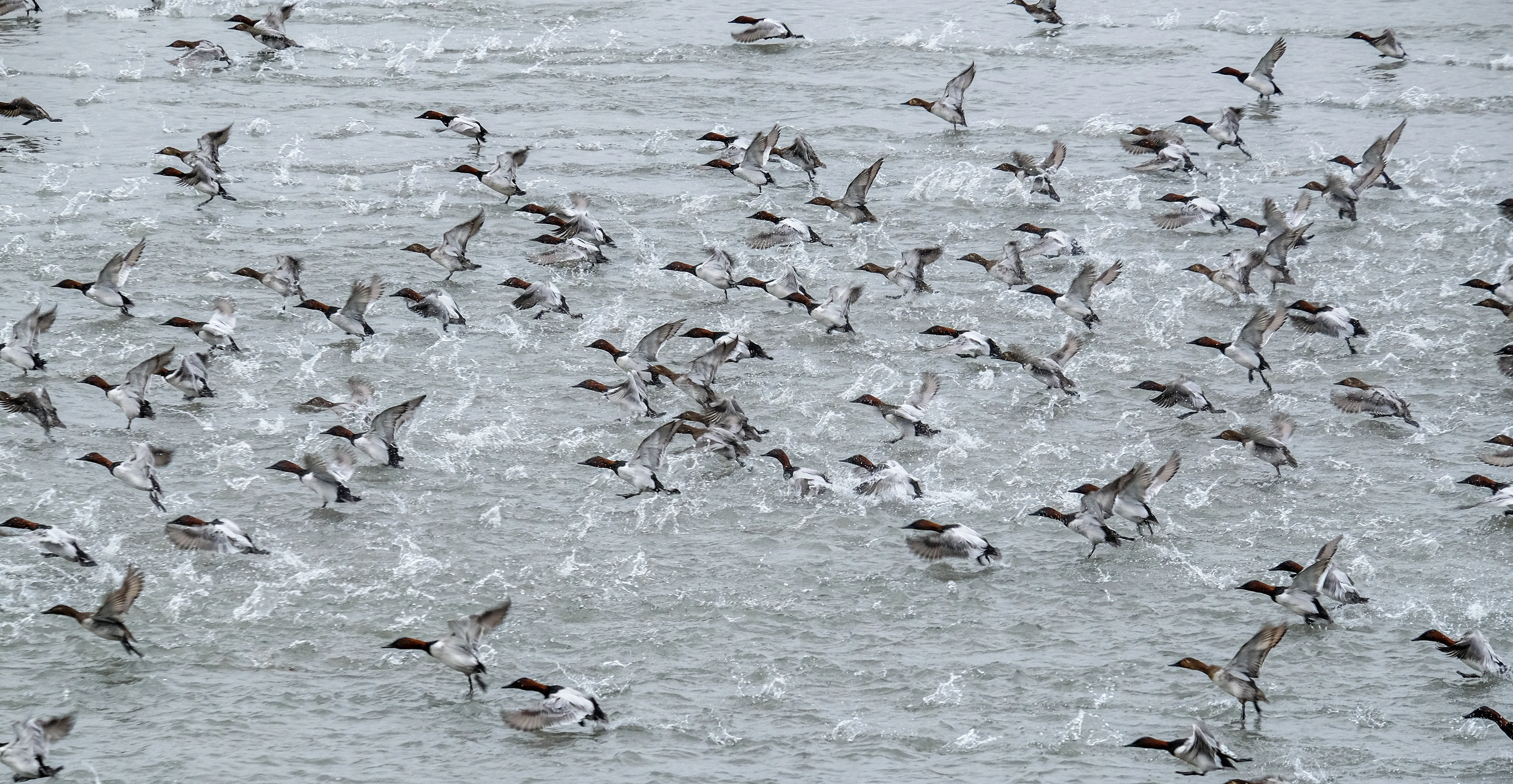
The Upper Mississippi River is a historic stretch of meandering current that holds some 450,000 canvasbacks, along with damn near every puddler, diver, and goose known to man. But The King is what brings waterfowlers from far and wide to this area, many of which set their rigs in the shallow waters of Pool 9 located between the dams at Harpers Ferry, Iowa, and Genoa, Wisconsin.
Canvasbacks usually arrive here in mid-October, and their numbers steadily increase through Halloween and into November until there are nearly half a million of the slope-faced ducks trading the waters and the sky above the Mississippi. The quilt of islands makes for great places to tuck in a big boat blind or to ditch the mother ship and hunt from layouts. We did the latter on my trip to Pool 9, where I hunted with Mark Rongers, founder of the Mighty Layout Boats. Here I watched two hundred thousand canvasbacks, maybe more, in high-flying Vs. Then I heard the fighter jet rush of wings as 30…40…50 strafed the decoys. Sitting in those layout boats surrounded by 150 decoys while watching a sky full of canvasbacks trade back and forth is one of my best waterfowl memories. —M.D.J.
10. St. Paul Island King Eiders
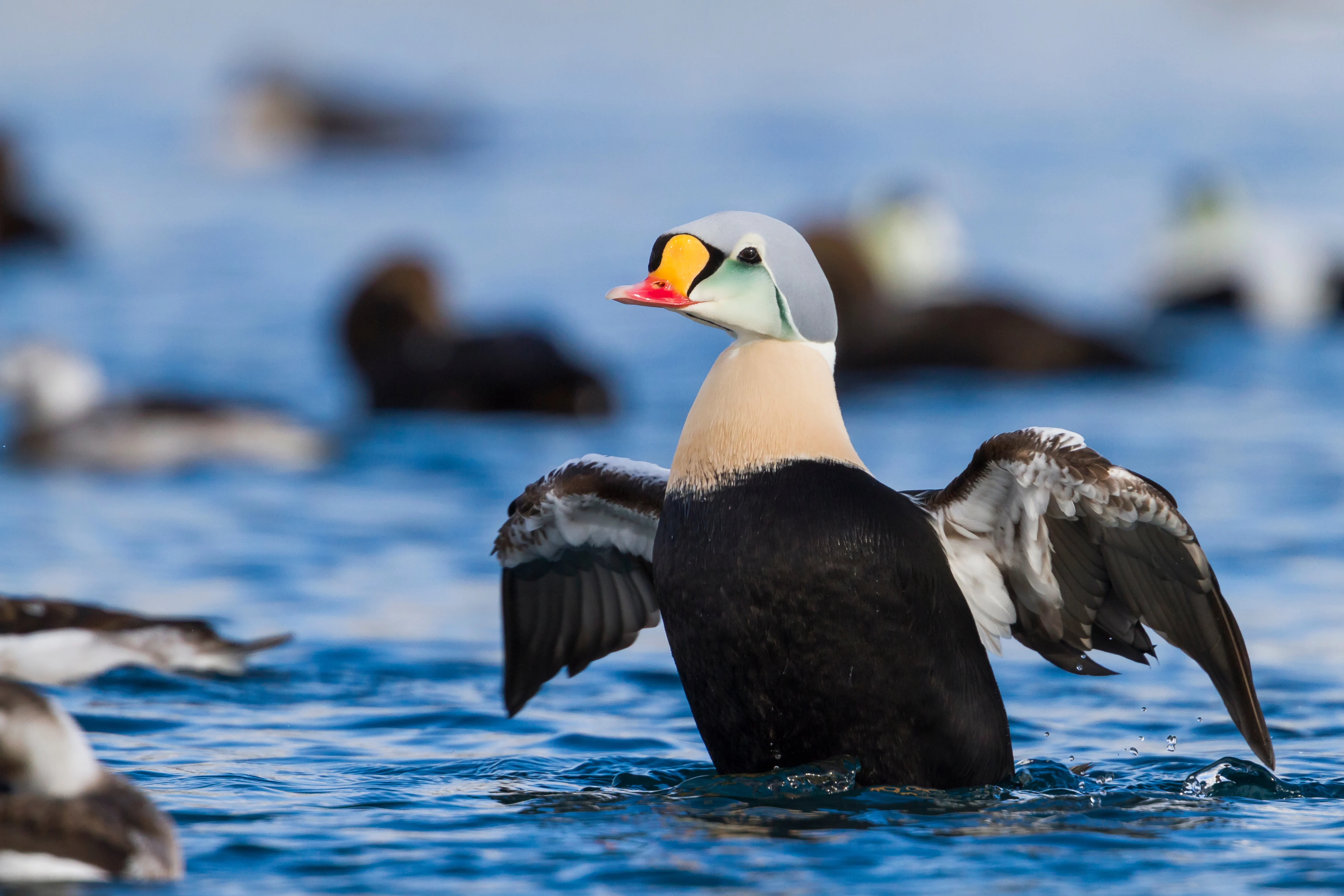
Located in the middle of the Bering Sea, St. Paul Island is one of the few areas in the world where hunters can shoot a king eider. However, just getting to this rocky shore island in the middle of dangerous waters is an adventure of its own. Requiring multiple flights, there is no guarantee you'll get clear weather to fly from Anchorage to St. Paul. If you do make it to the island, then you have to hope for calm enough seas to actually get out and hunt.
I'll be making my first trip to St. Paul later this season, and from what I've been told, I should expect a grueling hunt. Experienced captain Jeff Wasley of Four Flyways Outfitters will guide our five-day hunt. We'll be hunting from small boats over long lines off the shores of St. Paul. Most hunters who spend the money to go to St. Paul are chasing the 41 North American species of waterfowl, and the king eider is arguably the toughest bird to take. Dangerous conditions, difficult shooting, and gorgeous sea ducks are what make this trip truly a once-in-a-lifetime adventure. Late January can't come soon enough. —R.C.

